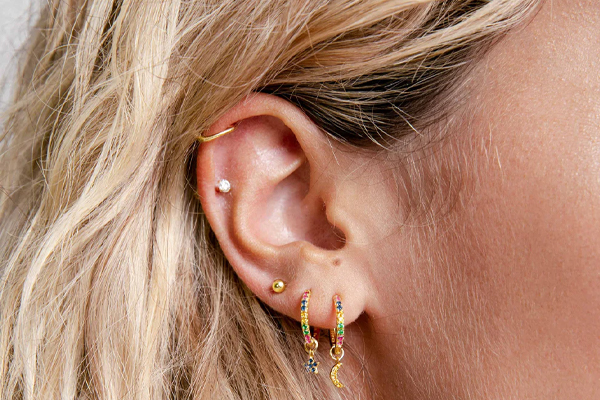Ear Piering
Ear piercing is a procedure in which a small hole is made in the earlobe or cartilage to insert jewelry. It is a common cultural and fashion practice worldwide and can be done at various locations on the ear. Below is an overview of ear piercing:
Types of Ear Piercings
- Standard Lobe Piercing: The most common type, done on the soft earlobe.
- Upper Lobe Piercing: A variation higher on the earlobe.
- Helix Piercing: Involves the outer cartilage of the upper ear.
- Forward Helix Piercing: Located on the cartilage close to the face.
- Conch Piercing: Done in the inner cartilage, creating a bold look.
- Tragus Piercing: Performed on the small flap of cartilage in front of the ear canal.
- Industrial Piercing: Two holes connected by a single barbell, typically on the upper ear.
- Daith Piercing: Located in the cartilage fold above the ear canal.
- Rook Piercing: Done on the cartilage fold above the daith.
Procedure Steps
- Preparation: The ear is cleaned with an antiseptic to prevent infection.
- Marking: The piercing spot is marked with a pen for accuracy.
- Piercing:
- Needle Method: A sterilized hollow needle is used for precision and minimal tissue damage.
- Gun Method: A piercing gun is used, mainly for earlobes (less recommended for cartilage).
- Jewelry Insertion: Hypoallergenic jewelry, like surgical steel or titanium, is inserted immediately.
Aftercare Tips
- Clean the piercing with a saline solution or antiseptic twice daily.
- Avoid touching the piercing with unclean hands.
- Do not remove or change the jewelry during the healing period.
- Avoid swimming, especially in chlorinated water, during the initial healing phase.
Healing Time
- Lobe Piercing: 6-8 weeks.
- Cartilage Piercing: 3-6 months (sometimes longer).
Risks
- Infection: Redness, swelling, or pus at the site.
- Allergic Reactions: Typically due to the type of metal used in the jewelry.
- Keloids: Raised scars that can form around the piercing.
- Cartilage Damage: More common with gun piercings.



